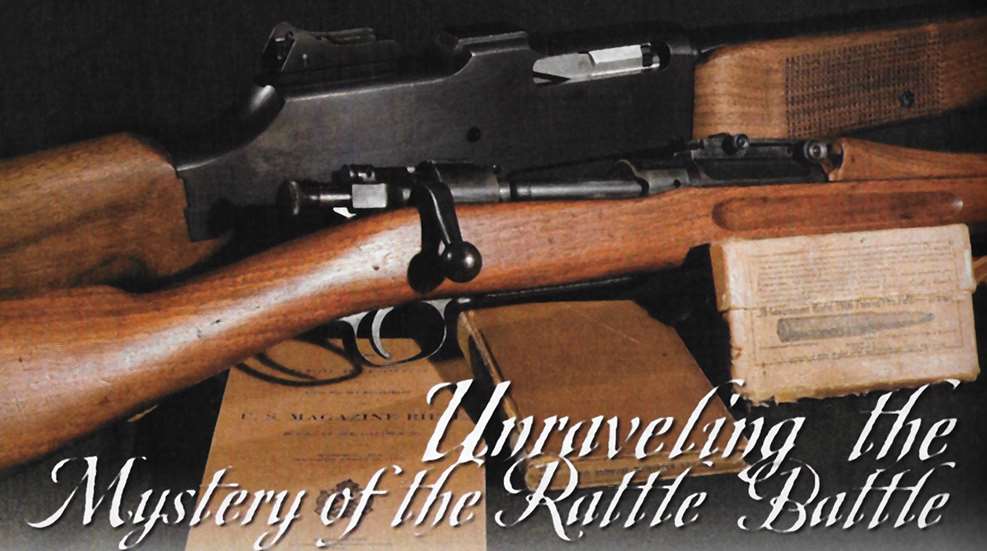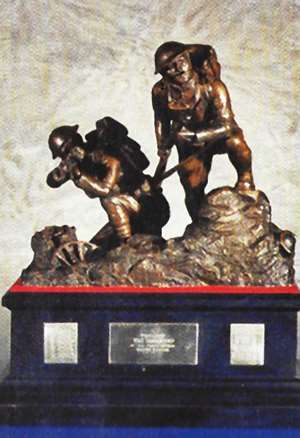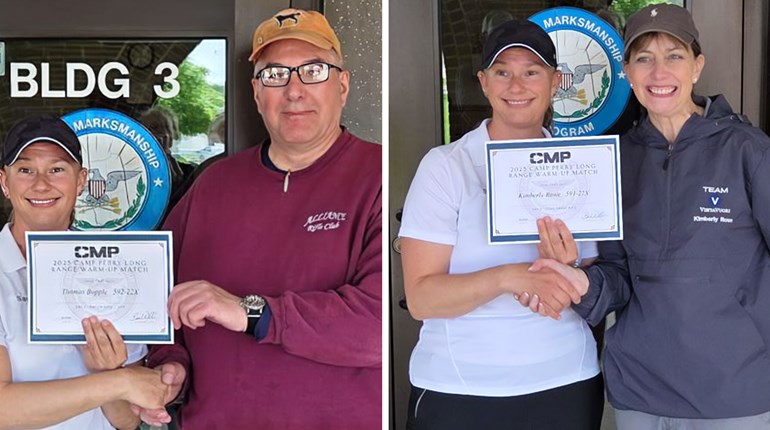
Since the National Trophy Infantry Team Match is so rarely fired, questions about team tactics and strategy often arise. How many shooters, and more importantly coaches, on the firing line at Camp Perry truly know the ins-and-outs of the of the match commonly known as the Rattle Battle. While some might know it is fired from the 600-, 500-, 300- and the 200-yard line, they may not know how to optimize a team's overall performance. It would be surprising if more than a handful would know that the maximum score for the match is 1616.
Common questions that coaches and shooters ask are whether it is better to shoot all bullets at the longest yard line to get the maximum number of points, what strategy should be used to optimize a load plan, what methods can be done to maximize a shooter's performance, and finally, what should the coaches do during firing to assist the shooters?

But wait, the maximum score is 1616. Let's think outside the box. If we can get 64 bonus points by simply shooting eight targets with six hits each, we can do that by firing a minimum of 48 bullets. If we were to only shoot 336 bullets at the 600-yard line, and receive all hits, we can get 1344 points for the hits, and an additional 64 bonus points for squaring the targets, for an overall score of 1408 points. We then fire the remaining 48 bullets from the 500-yard line. With all targets receiving six hits at the 500-yard line, we would receive 144 points for the hits and an additional 64 bonus points for a total of 208 points at the 500-yard line. This gives us a grand total of 1616, hence, the importance of gaining bonus points.
Now to answer some of the more commonly asked questions:
Is it better to shoot all rounds at the longest yard line to achieve the maximum number of points? Yes and no. It is better to shoot at the longest yard line if your team members are capable of hitting the target in order to receive the points desired, but not at the expense of losing bonus points at the closer yard line. If you look at a previous winner (2006), you will see that the answer is “yes.” The team received 210 hits at the 600-yard line, and with the bonus, received 904 points at the 600-yard line. It then fired its remaining bullets at the 500-yard line, receiving 133 hits for a total of 463 points, including the bonus. The team would have done better had it saved 48 bullets at the 500-yard line and instead fired them at the 300-yard line. They would have lost a potential of 48 points—one point for each bullet because of the three-point hit allocation at the 500-yard line, and the two-point hit allocation at the 300—but the team would have received a bonus of 64 points for a net gain of 16 points. At the top level of competition, nothing should be left to chance, and optimizing your team member's load plan is important to maximize your team's scoring opportunity.
What strategy should you use to optimize your load plan? As mentioned earlier, shooting at the longest yard lines is preferable, but only if your shooters are capable of getting all their rounds on target. Shooting more bullets while receiving fewer hits at the 600-yard line hurts your score in the long run. The target is 20 percent larger as perceived by the shooter at the 500-yard line when compared to the 600-yard line, giving the shooter a much higher probability of placing more rounds on the target at the closer yard line. If a shooter can fire 30 well-aimed shot in 50 seconds with a 90 percent hit rate—27 hits—but with 40 rushed shots only has an 80 percent hit rate—32 hits—then the cost of gaining five hits came at the cost of 10 extra bullets. The team would have done better saving the 10 rounds and shooting them at a closer yard line. Therefore, it is better to receive 10 hits at a lower point value than only five at a higher value.
When identifying a load plan, team coaches should first determine the marginal success rate of each shooter. What this means is, at what rate of firing does the shooter lose more points than could be gained. For instance, at the 600-yard line, the marginal success rate is 75 percent. In other words, for every four extra shots a team member takes, he or she must receive three hits. So, if a shooter can place all 30 shots on a target in 50 seconds, but only 33 out of 35 shots by using a larger load plan, then this shooter might be able to gain 12 points—three hits by four points. However, this is done at the loss of opportunity to receive 15 points had those shots been fired from the 500-yard line instead—five hits by three points. The 75 percent success-rate ratio of hits is not of the total shots fired, but only of the last shots fired. It is important for the coaches to know the probability rate for each shooter in order to receive the maximum number of hits with each load plan.
What methods can be used to maximize each shooter's performance? It is vitally important that all shooters are zeroed at each yard line. At Camp Perry, this can be difficult since the firing points at each yard line are not always even. This might cause shooters to fire from a position that is not as comfortable as what they would like. Therefore, coaches and shooters should spend extra time ensuring their firing positions are solid and level, especially at the 600-yard line where a three minute preparation period is given. Both the competitor and coach should ensure the chosen shooting area is level and does not cause the shooter's position to lean, or cant the rifle in a different fashion than normal, and that the wind adjustment given to each team member by the coaches is well understood.
And, what can, and should, the coaches do during firing to assist their shooters? Coaches should make sure they have top-of-the-line binoculars to observe hit placement of their shooters' rounds. While binoculars do not allow the user to actually see the bullet holes at the 600-yard line, they should help in detecting the vapor trails of the bullets to determine the strike placement. It is important that the windage for each shooter is correct in order to optimize hit placement, otherwise some pre-arranged adjustment must be given. If a shooter saves a few rounds because of a questionable sight adjustment, the loss of one point for each saved bullet is worth it if that bullet can be confidently fired at another yard line for a hit.
While it is inevitably up to the shooters to do the actual firing, it is still the coaches' responsibility to develop a strategy and tactics that will maximize each shooter's potential. Developing an appropriate load plan will get the most out of your shooters' performance.

































